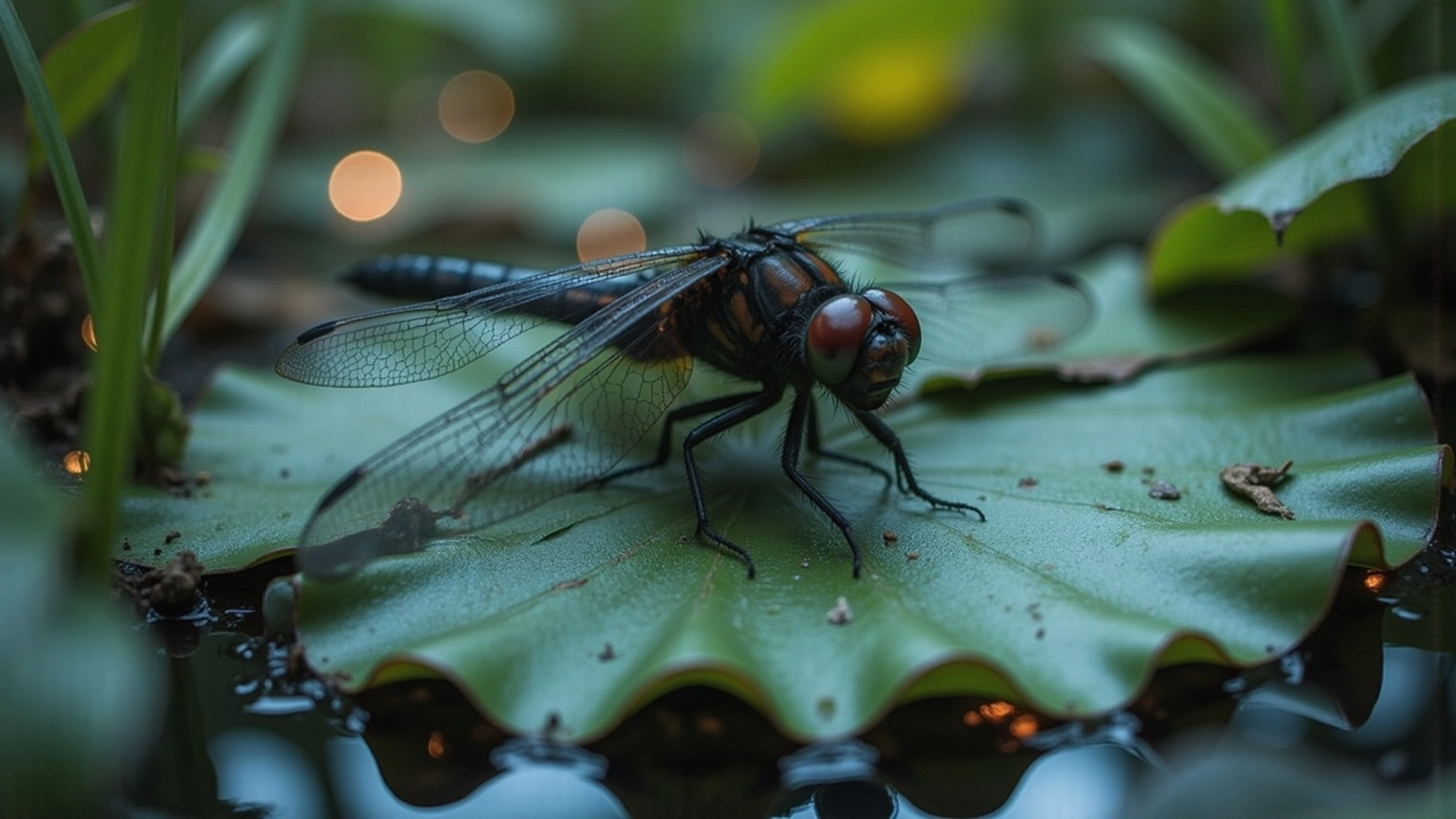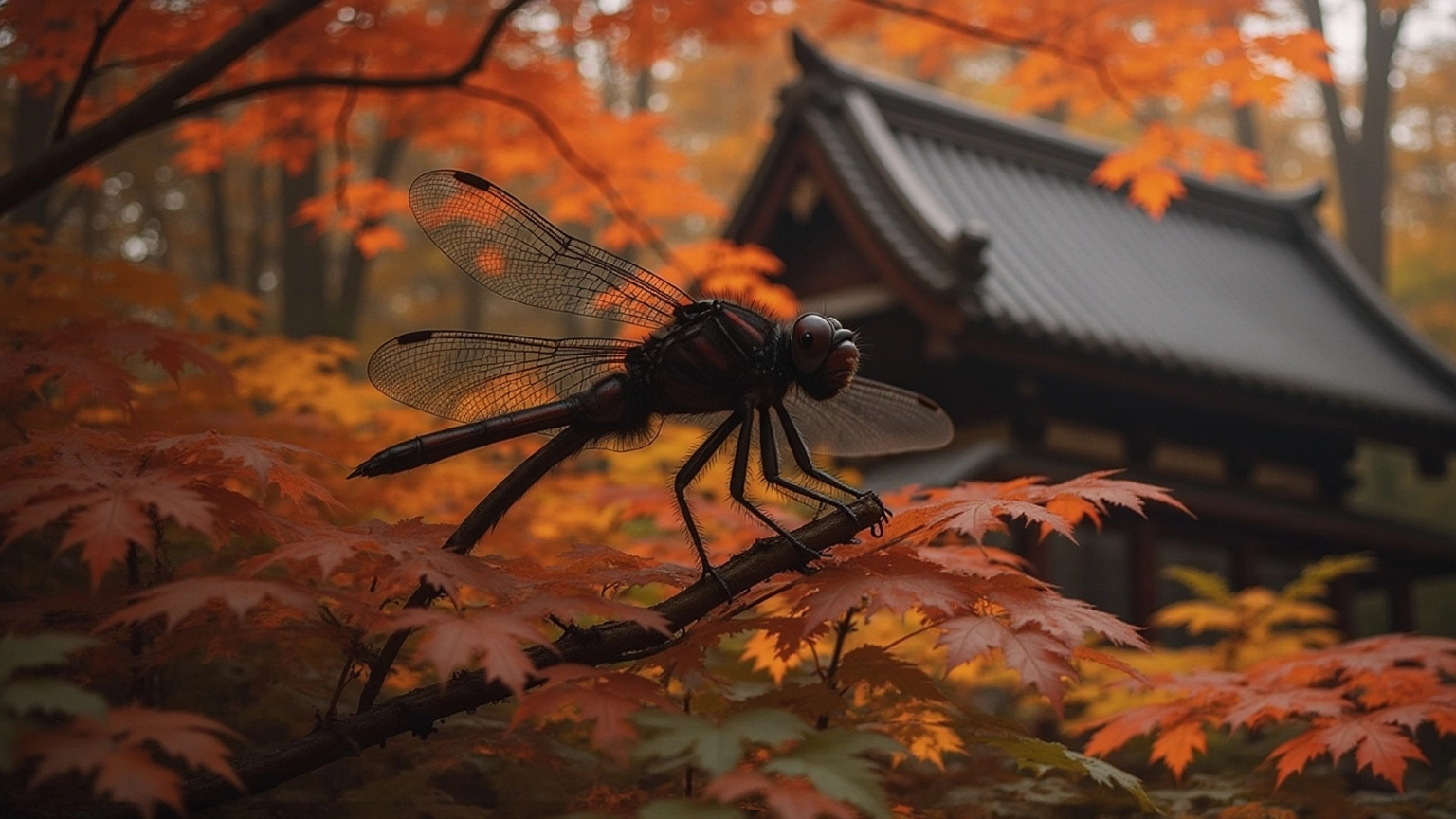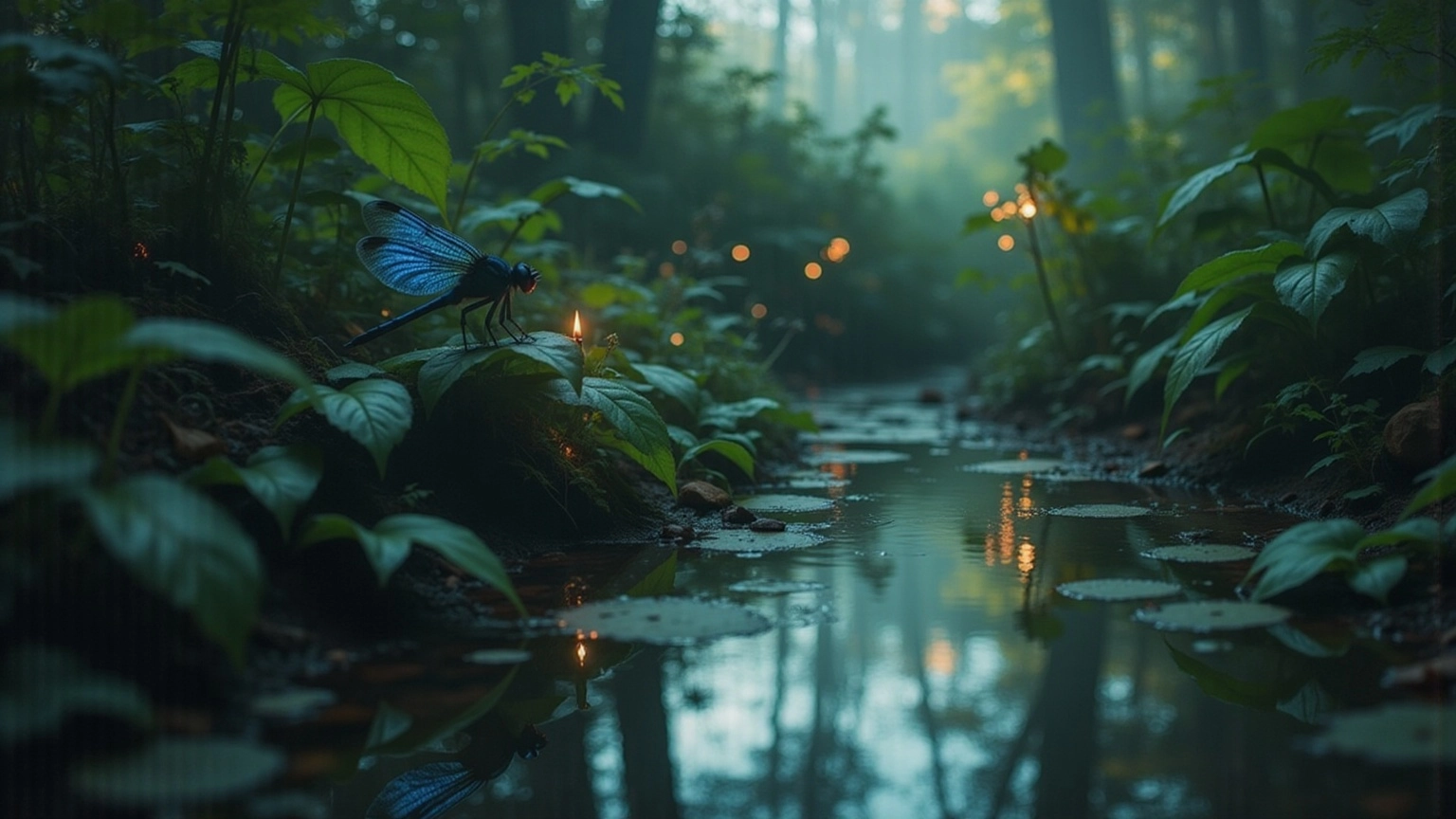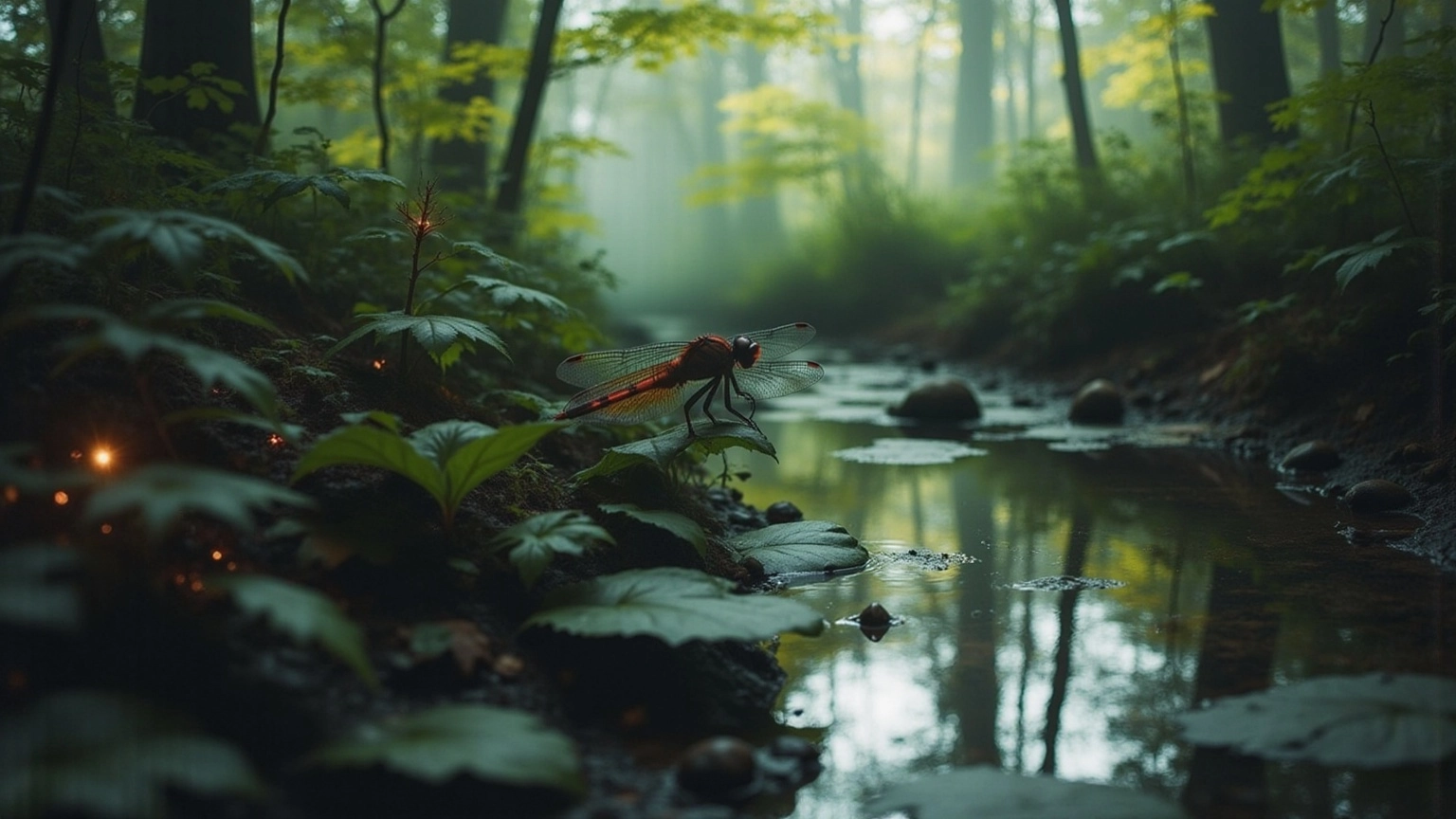
What Does It Mean When You See a Dragonfly? Explore Its Symbolism
Share
Overview
Dragonflies—symbols of transformation, personal growth, and spiritual guidance. They whisper secrets of adaptability and resilience, their very existence a testament to metamorphosis. Across cultures, from Indigenous Americans to the Japanese, they emerge as messengers of change and strength. What do these winged wonders reveal about our own journeys? Dive into their world, where every flutter carries the weight of tradition and the promise of evolution.
Introduction
The delicate dragonfly—its vibrant colors and agile flight—doesn't just catch the eye; it ensnares the imagination, standing as a potent symbol across cultures.
This piece dives into the intricate tapestry of dragonfly symbolism, unearthing how these extraordinary insects embody:
- Transformation
- Resilience
- Spiritual guidance
But as their numbers dwindle, a haunting question surfaces: what deeper meanings lurk behind the ephemeral dance of a dragonfly? How can its fleeting presence ignite personal growth and sharpen our ecological awareness? Let's unravel these mysteries.
Define Dragonflies: Characteristics and Habitat
Dragonflies—those mesmerizing creatures of the order Odonata—boast large, multifaceted eyes and two pairs of strong, transparent wings, their elongated bodies slicing through the air. They thrive near freshwater, laying eggs in the stillness of ponds, lakes, and rivers. But don’t be fooled; their presence is not just a pretty sight. They’re the pulse of the ecosystem, indicators of water quality and biodiversity. Recent studies reveal these aerial acrobats can hover, fly backward, and execute sharp turns, flaunting exceptional flying prowess. With a high power-to-weight ratio, they consume up to 20% of their body weight daily, proving they are predators to be reckoned with.
The life cycle of these insects is nothing short of captivating. Picture this: a nymph phase spent in aquatic realms for months, sometimes years, depending on the species. This metamorphosis from nymph to adult isn’t just a change; it’s a testament to evolution and adaptability, a gritty survival story. The adaptability of these nymphs to various aquatic environments underscores their ecological versatility. As they emerge as adults, they symbolize personal transformation, leading us to consider what does it mean when you see a dragonfly, revealing the intricate web of life cycles interwoven within ecosystems. Yet, a stark reality looms—16 percent of these insects and their damselfly cousins are teetering on the brink of extinction, victims of habitat loss. This fact screams for conservation efforts.
Viola Clausnitzer notes that these insects serve as sentinels for wetland conservation, a chilling reminder of their ecological significance. Their ability to thrive in diverse habitats makes them crucial players in maintaining ecological balance. So, as we delve deeper into the world of dragonflies, let’s not just admire their beauty; let’s recognize their vital role in our ecosystems. The call to action is clear: conservation isn’t just necessary; it’s essential.

Explore Cultural Symbolism: Dragonflies in Japanese Tradition
In the shadows of Japanese culture, dragonflies emerge as symbols of agility, determination, and victory, leading to the question of what does it mean when you see a dragonfly, which echoes the fierce spirit of the samurai. Their presence dances with the seasons, especially autumn, and they leap from the pages of traditional haiku, capturing fleeting beauty in every syllable. Ever heard the children's song 'Akatombo'? It weaves nostalgic threads, solidifying their status as cherished icons in Japan's tapestry.
But there’s more. These insects are not just pretty faces; they’re guardians of innocence, hunting down harmful bugs and shielding the young from danger. This reverence unveils a deeper connection to strength, resilience, and the intricate beauty of nature itself. And let’s not forget the historical link—Japan's name, 'Akitsushima,' meaning 'The Island of the Dragon-fly,' speaks volumes about their significance in the national psyche.
Yet, folklore adds a twist, leading to the inquiry of what does it mean when you see a dragonfly. Tying a dragonfly in your hair? That’s a ticket to madness, or so the tales say. Intrigued yet? Their legacy in folklore and art cements their role as symbols of renewal and vitality, making them an indelible part of Japan's cultural heritage. Dive deeper, and you’ll find layers of meaning that challenge the ordinary, beckoning you to explore the gothic beauty of this natural world.

Uncover Spiritual Meanings: Transformation and Guidance from Dragonflies
Dragonflies—those fierce harbingers of transformation—are not just insects; they are potent symbols of self-realization, steeped in the spiritual lore of countless cultures. Their mere presence? A whisper from the beyond, urging you to shed the skin of your old self and step boldly into the unknown. This metamorphosis echoes in their life cycle, from egg to nymph to adult—a testament to profound growth and relentless change.
In many traditions, the question of what does it mean when you see a dragonfly serves as a wake-up call to break free from self-imposed chains and embrace new beginnings. Take Indigenous American beliefs, for instance; these creatures are seen as messengers of transformation, connecting the living with the spirits of those who’ve passed. In Japan, they embody strength and courage, a reminder that personal transformation demands resilience. And that blue dragonfly? It’s a fierce emblem of courage, a vivid reminder that these traits are essential during tumultuous times.
Recent discussions highlight what does it mean when you see a dragonfly as a guide through life's upheavals, showcasing its knack for inspiring individuals to navigate challenges with grace. A case study on the blue dragonfly reveals how its symbolism of change can ignite personal development, underscoring that evolution isn’t just possible—it’s vital for self-discovery. Embrace the lessons of this extraordinary insect, and you’ll uncover clarity and purpose, leading to a life that feels undeniably fulfilling. As one insightful soul noted, these creatures are potent symbols of change, reminding us that transformation is not just an option; it’s an essential part of our journey.

Summarize Global Interpretations: Dragonflies in Various Cultures
What does it mean when you see a dragonfly, and what do they signify to you? Across cultures, these creatures pulse with significance. In Native American lore, they embody purity and renewal, dancing on the edges of water, that life-giving force. This connection isn’t just poetic; it’s a call for emotional clarity and spiritual growth. Have you ever felt their presence and thought about what does it mean when you see a dragonfly? Ishita Ganguly suggests that if they flit around you, you might wonder what does it mean when you see a dragonfly, as they could be your spirit guides nudging you toward transformation.
But wait, there’s more. In Chinese traditions, dragonflies scream prosperity and harmony, a reminder of nature's delicate balance and our interconnected lives. Meanwhile, in Japan, 'tombo' symbolize strength, bravery, and joy—honored by samurai warriors who understood the weight of their flight. In some African cultures, they’re seen as omens of good luck, reinforcing this positive vibe.
Yet, it’s not all sunshine and rainbows. In Denmark and Portugal, these insects sometimes carry negative connotations, showcasing the complex tapestry of their symbolism. Common threads weave through these interpretations: transformation, adaptability, and resilience, prompting us to consider what does it mean when you see a dragonfly. Dragonflies are not just insects; they are powerful emblems of change and personal evolution.
Consider their dual mastery of water and air. They remind us to embrace life’s shifts and the beauty that can emerge from chaos. And let’s not forget—dragonflies have been cruising the Earth for over 300 million years. Their historical significance? Unmatched. Their resilience? Legendary. Dive deeper, and you might just find the secrets they hold.

Conclusion
Dragonflies are more than mere insects; they are fierce symbols of transformation, resilience, and the precarious balance of nature. Their life cycle, a wild journey from nymph to adult, showcases not just adaptability but the raw potential for personal evolution. Spotting a dragonfly? It’s a nudge to embrace change—transformation isn’t just a phase; it’s the heartbeat of your journey.
Dive into the cultural tapestry woven around these creatures, and you’ll find a kaleidoscope of meanings. In Japan, they stand tall as emblems of strength and victory, while Native American lore paints them as harbingers of purity and renewal. These interpretations resonate deeply, echoing universal themes of adaptability and resilience, daring you to reflect on your own life’s metamorphoses.
Ultimately, when a dragonfly flits into your life, it’s a powerful reminder to tackle challenges with grit and grace. Embrace the lessons these extraordinary beings offer, and you’ll uncover clarity and purpose. Whether seen as spiritual guides or symbols of personal evolution, dragonflies beckon you to forge a deeper connection with nature and commit to nurturing harmony within ecosystems. The message is unmistakable: cherish and protect these remarkable creatures—they embody the beauty of transformation and the intricate web of life that binds us all.
Frequently Asked Questions
What are the main characteristics of dragonflies?
Dragonflies have large, multifaceted eyes, two pairs of strong, transparent wings, and elongated bodies. They are known for their exceptional flying abilities, including hovering, flying backward, and executing sharp turns.
Where do dragonflies typically thrive?
Dragonflies thrive near freshwater environments such as ponds, lakes, and rivers, where they lay their eggs.
What role do dragonflies play in the ecosystem?
Dragonflies are indicators of water quality and biodiversity, serving as important predators in their habitats and contributing to the ecological balance.
What is the life cycle of a dragonfly like?
The life cycle of a dragonfly includes a nymph phase spent in aquatic environments, which can last for months or even years, followed by metamorphosis into an adult.
What does the presence of dragonflies indicate about their environment?
The presence of dragonflies indicates a healthy ecosystem and good water quality, as they are sensitive to environmental changes.
What is the conservation status of dragonflies and damselflies?
Approximately 16 percent of dragonflies and their damselfly relatives are at risk of extinction due to habitat loss, highlighting the need for conservation efforts.
Why are dragonflies considered important for wetland conservation?
Dragonflies serve as sentinels for wetland conservation, reflecting the health of these ecosystems and emphasizing their ecological significance.
